
|
|
 |
|
|
|
Welcome to the Australian Ford Forums forum. You are currently viewing our boards as a guest which gives you limited access to view most discussions and inserts advertising. By joining our free community you will have access to post topics, communicate privately with other members, respond to polls, upload content and access many other special features without post based advertising banners. Registration is simple and absolutely free so please, join our community today! If you have any problems with the registration process or your account login, please contact us. Please Note: All new registrations go through a manual approval queue to keep spammers out. This is checked twice each day so there will be a delay before your registration is activated. |
|
|||||||
| The Bar For non Automotive Related Chat |
 |
|
|
Thread Tools | Display Modes |
|
|
#571 | |||
|
Regular Member
Join Date: Jan 2005
Location: Melbourne
Posts: 157
|
Quote:
I know you can nearly get anything you want made from certain places for a price. Only place I know in Melbourne that sells a lot of model stuff. http://www.camaust.com.au/ I am sure others on here will know places. |
|||
|
|

|
|
|
#572 | |||
|
Falcon RTV - FG G6ET
 Join Date: Mar 2007
Location: In Da Bush, QLD
Posts: 31,688
|
Quote:
This is another really good story from "sled driver", about the slowest he's flown: So it was with great surprise, when at the end of one of my presentations, someone asked, “what was the slowest you ever flew the Blackbird?” This was a first. After giving it some thought, I was reminded of a story that I had never shared before, and relayed the following. I was flying the SR-71 out of RAF Mildenhall, England , with my back-seater, Walt Watson; we were returning from a mission over Europe and the Iron Curtain when we received a radio transmission from home base. As we scooted across Denmark in three minutes, we learned that a small RAF base in the English countryside had requested an SR-71 fly-past. The air cadet commander there was a former Blackbird pilot, and thought it would be a motivating moment for the young lads to see the mighty SR-71 perform a low approach. No problem, we were happy to do it. After a quick aerial refueling over the North Sea , we proceeded to find the small airfield. Walter had a myriad of sophisticated navigation equipment in the back seat, and began to vector me toward the field. Descending to subsonic speeds, we found ourselves over a densely wooded area in a slight haze. Like most former WWII British airfields, the one we were looking for had a small tower and little surrounding infrastructure. Walter told me we were close and that I should be able to see the field, but I saw nothing. Nothing but trees as far as I could see in the haze. We got a little lower, and I pulled the throttles back from 325 knots we were at. With the gear up, anything under 275 was just uncomfortable. Walt said we were practically over the field—yet; there was nothing in my windscreen. I banked the jet and started a gentle circling maneuver in hopes of picking up anything that looked like a field. Meanwhile, below, the cadet commander had taken the cadets up on the catwalk of the tower in order to get a prime view of the fly-past. It was a quiet, still day with no wind and partial gray overcast. Walter continued to give me indications that the field should be below us but in the overcast and haze, I couldn't see it.. The longer we continued to peer out the window and circle, the slower we got. With our power back, the awaiting cadets heard nothing. I must have had good instructors in my flying career, as something told me I better cross-check the gauges. As I noticed the airspeed indicator slide below 160 knots, my heart stopped and my adrenalin-filled left hand pushed two throttles full forward. At this point we weren't really flying, but were falling in a slight bank. Just at the moment that both afterburners lit with a thunderous roar of flame (and what a joyous feeling that was) the aircraft fell into full view of the shocked observers on the tower Shattering the still quiet of that morning, they now had 107 feet of fire-breathing titanium in their face as the plane leveled and accelerated, in full burner, on the tower side of the infield, closer than expected, maintaining what could only be described as some sort of ultimate knife-edge pass. Quickly reaching the field boundary, we proceeded back to Mildenhall without incident. We didn't say a word for those next 14 minutes. After landing, our commander greeted us, and we were both certain he was reaching for our wings. Instead, he heartily shook our hands and said the commander had told him it was the greatest SR-71 fly-past he had ever seen, especially how we had surprised them with such a precise maneuver that could only be described as breathtaking. He said that some of the cadet’s hats were blown off and the sight of the plan form of the plane in full afterburner dropping right in front of them was unbelievable. Walt and I both understood the concept of “breathtaking” very well that morning, and sheepishly replied that they were just excited to see our low approach. As we retired to the equipment room to change from space suits to flight suits, we just sat there-we hadn't spoken a word since “the pass.” Finally, Walter looked at me and said, “One hundred fifty-six knots. What did you see?” Trying to find my voice, I stammered, “One hundred fifty-two.” We sat in silence for a moment. Then Walt said, “Don’t ever do that to me again!” And I never did. A year later, Walter and I were having lunch in the Mildenhall Officer’s club, and overheard an officer talking to some cadets about an SR-71 fly-past that he had seen one day. Of course, by now the story included kids falling off the tower and screaming as the heat of the jet singed their eyebrows. Noticing our HABU patches, as we stood there with lunch trays in our hands, he asked us to verify to the cadets that such a thing had occurred. Walt just shook his head and said, “It was probably just a routine low approach; they're pretty impressive in that plane.” Impressive indeed. And: From Aviation Week & Space Technology By Bill Weaver Among professional aviators, there's a well-worn saying: Flying is simply hours of boredom punctuated by moments of stark terror. And yet, I don't recall too many periods of boredom during my 30-year career with Lockheed, most of which was spent as a test pilot. By far, the most memorable flight occurred on Jan. 25, 1966. Jim Zwayer, a Lockheed flight test reconnaissance and navigation systems specialist, and I were evaluating those systems on an SR-71 Blackbird test from Edwards AFB, Calif. We also were investigating procedures designed to reduce trim drag and improve high-Mach cruise performance. The latter involved flying with the center-of-gravity (CG) located further aft than normal, which reduced the Blackbird's longitudinal stability. We took off from Edwards at 11:20 a.m. and completed the mission's first leg without incident. After refueling from a KC-135 tanker, we turned eastbound, accelerated to a Mach 3.2-cruise speed and climbed to 78,000 ft., our initial cruise-climb altitude. Several minutes into cruise, the right engine inlet's automatic control system malfunctioned, requiring a switch to manual control. The SR-71's inlet configuration was automatically adjusted during supersonic flight to decelerate air flow in the duct, slowing it to subsonic speed before reaching the engine's face. This was accomplished by the inlet's center-body spike translating aft, and by modulating the inlet's forward bypass doors. Normally, these actions were scheduled automatically as a function of Mach number, positioning the normal shock wave (where air flow becomes subsonic) inside the inlet to ensure optimum engine performance. Without proper scheduling, disturbances inside the inlet could result in the shock wave being expelled forward--a phenomenon known as an "inlet unstart." That causes an instantaneous loss of engine thrust, explosive banging noises and violent yawing of the aircraft--like being in a train wreck. Unstarts were not uncommon at that time in the SR-71's development, but a properly functioning system would recapture the shock wave and restore normal operation. On the planned test profile, we entered a programmed 35-deg. bank turn to the right. An immediate unstart occurred on the right engine, forcing the aircraft to roll further right and start to pitch up. I jammed the control stick as far left and forward as it would go. No response. I instantly knew we were in for a wild ride. I attempted to tell Jim what was happening and to stay with the airplane until we reached a lower speed and altitude. I didn't think the chances of surviving an ejection at Mach 3.18 and 78,800 ft. were very good. However, g-forces built up so rapidly that my words came out garbled and unintelligible, as confirmed later by the cockpit voice recorder. The cumulative effects of system malfunctions, reduced longitudinal stability, increased angle-of-attack in the turn, supersonic speed, high altitude and other factors imposed forces on the airframe that exceeded flight control authority and the Stability Augmentation System's ability to restore control. Everything seemed to unfold in slow motion. I learned later the time from event onset to catastrophic departure from controlled flight was only 2-3 sec. Still trying to communicate with Jim, I blacked out, succumbing to extremely high g-forces. The SR-71 then literally disintegrated around us. From that point, I was just along for the ride. My next recollection was a hazy thought that I was having a bad dream. Maybe I'll wake up and get out of this mess, I mused. Gradually regaining consciousness, I realized this was no dream; it had really happened. That also was disturbing, because I could not have survived what had just happened. Therefore, I must be dead. Since I didn't feel bad--just a detached sense of euphoria--I decided being dead wasn't so bad after all. AS FULL AWARENESS took hold, I realized I was not dead, but had somehow separated from the airplane. I had no idea how this could have happened; I hadn't initiated an ejection. The sound of rushing air and what sounded like straps flapping in the wind confirmed I was falling, but I couldn't see anything. My pressure suit's face plate had frozen over and I was staring at a layer of ice. The pressure suit was inflated, so I knew an emergency oxygen cylinder in the seat kit attached to my parachute harness was functioning. It not only supplied breathing oxygen, but also pressurized the suit, preventing my blood from boiling at extremely high altitudes. I didn't appreciate it at the time, but the suit's pressurization had also provided physical protection from intense buffeting and g-forces. That inflated suit had become my own escape capsule. My next concern was about stability and tumbling. Air density at high altitude is insufficient to resist a body's tumbling motions, and centrifugal forces high enough to cause physical injury could develop quickly. For that reason, the SR-71's parachute system was designed to automatically deploy a small-diameter stabilizing chute shortly after ejection and seat separation. Since I had not intentionally activated the ejection system--and assuming all automatic functions depended on a proper ejection sequence--it occurred to me the stabilizing chute may not have deployed. However, I quickly determined I was falling vertically and not tumbling. The little chute must have deployed and was doing its job. Next concern: the main parachute, which was designed to open automatically at 15,000 ft. Again, I had no assurance the automatic-opening function would work. I couldn't ascertain my altitude because I still couldn't see through the iced-up face plate. There was no way to know how long I had been blacked-out, or how far I had fallen. I felt for the manual-activation D-ring on my chute harness, but with the suit inflated and my hands numbed by cold, I couldn't locate it. I decided I'd better open the face plate, try to estimate my height above the ground, then locate that "D" ring. Just as I reached for the face plate, I felt the reassuring sudden deceleration of main-chute deployment. I raised the frozen face plate and discovered its uplatch was broken. Using one hand to hold that plate up, I saw I was descending through a clear, winter sky with unlimited visibility. I was greatly relieved to see Jim's parachute coming down about a quarter of a mile away. I didn't think either of us could have survived the aircraft's breakup, so seeing Jim had also escaped lifted my spirits incredibly. I could also see burning wreckage on the ground a few miles from where we would land. The terrain didn't look at all inviting--a desolate, high plateau dotted with patches of snow and no signs of habitation. I tried to rotate the parachute and look in other directions. But with one hand devoted to keeping the face plate up and both hands numb from high-altitude, subfreezing temperatures, I couldn't manipulate the risers enough to turn. Before the breakup, we'd started a turn in the New Mexico-Colorado-Oklahoma-Texas border region. The SR-71 had a turning radius of about 100 mi. at that speed and altitude, so I wasn't even sure what state we were going to land in. But, because it was about 3:00 p.m., I was certain we would be spending the night out here. At about 300 ft. above the ground, I yanked the seat kit's release handle and made sure it was still tied to me by a long lanyard. Releasing the hea vy kit ensured I wouldn't land with it attached to my derriere, which could break a leg or cause other injuries. I then tried to recall what survival items were in that kit, as well as techniques I had been taught in survival training. Looking down, I was startled to see a fairly large animal--perhaps an antelope--directly under me. Evidently, it was just as startled as I was because it literally took off in a cloud of dust. My first-ever parachute landing was pretty smooth. I landed on fairly soft ground, managing to avoid rocks, cacti and antelopes. My chute was still billowing in the wind, though. I struggled to collapse it with one hand, holding the still-frozen face plate up with the other. "Can I help you?" a voice said. Was I hearing things? I must be hallucinating. Then I looked up and saw a guy walking toward me, wearing a cowboy hat. A helicopter was idling a short distance behind him. If I had been at Edwards and told the search-and-rescue unit that I was going to bail out over the Rogers Dry Lake at a particular time of day, a crew couldn't have gotten to me as fast as that cowboy-pilot had. The gentleman was Albert Mitchell, Jr., owner of a huge cattle ranch in northeastern New Mexico. I had landed about 1.5 mi. from his ranch house--and from a hangar for his two-place Hughes helicopter. Amazed to see him, I replied I was having a little trouble with my chute. He walked over and collapsed the canopy, anchoring it with several rocks. He had seen Jim and me floating down and had radioed the New Mexico Highway Patrol, the Air Force and the nearest hospital. Extracting myself from the parachute harness, I discovered the source of those flapping-strap noises heard on the way down. My seat belt and shoulder harness were still draped around me, attached and latched. The lap belt had been shredded on each side of my hips, where the straps had fed through knurled adjustment rollers. The shoulder harness had shredded in a similar manner across my back. The ejection seat had never left the airplane; I had been ripped out of it by the extreme forces, seat belt and shoulder harness still fastened. I also noted that one of the two lines that supplied oxygen to my pressure suit had come loose, and the other was barely hanging on. If that second line had become detached at high altitude, the deflated pressure suit wouldn't have provided any protection. I knew an oxygen supply was critical for breathing and suit-pressurization, but didn't appreciate how much physical protection an inflated pressure suit could provide. That the suit could withstand forces sufficient to disintegrate an airplane and shred heavy nylon seat belts, yet leave me with only a few bruises and minor whiplash was impressive. I truly appreciated having my own little escape capsule. After helping me with the chute, Mitchell said he'd check on Jim. He climbed into his helicopter, flew a short distance away and returned about 10 min. later with devastating news: Jim was dead. Apparently, he had suffered a broken neck during the aircraft's disintegration and was killed instantly. Mitchell said his ranch foreman would soon arrive to watch over Jim's body until the authorities arrived. I asked to see Jim and, after verifying there was nothing more that could be done, agreed to let Mitchell fly me to the Tucumcari hospital, about 60 mi. to the south. I have vivid memories of that helicopter flight, as well. I didn't know much about rotorcraft, but I knew a lot about "red lines," and Mitchell kept the airspeed at or above red line all the way. The little helicopter vibrated and shook a lot more than I thought it should have. I tried to reassure the cowboy-pilot I was feeling OK; there was no need to rush. But since he'd notified the hospital staff that we were inbound, he insisted we get there as soon as possible. I couldn't help but think how ironic it would be to have survived one disaster only to be done in by the helicopter that had come to my rescue. However, we made it to the hospital safely--and quickly. Soon, I was able to contact Lockheed's flight test office at Edwards. The test team there had been notified initially about the loss of radio and radar contact, then told the aircraft had been lost. They also knew what our flight conditions had been at the time, and assumed no one could have survived. I briefly explained what had happened, describing in fairly accurate detail the flight conditions prior to breakup. The next day, our flight profile was duplicated on the SR-71 flight simulator at Beale AFB, Calif. The outcome was identical. Steps were immediately taken to prevent a recurrence of our accident. Testing at a CG aft of normal limits was discontinued, and trim-drag issues were subsequently resolved via aerodynamic means. The inlet control system was continuously improved and, with subsequent development of the Digital Automatic Flight and Inlet Control System, inlet unstarts became rare. Investigation of our accident revealed that the nose section of the aircraft had broken off aft of the rear cockpit and crashed about 10 mi. from the main wreckage. Parts were scattered over an area approximately 15 mi. long and 10 mi. wide. Extremely high air loads and g-forces, both positive and negative, had literally ripped Jim and me from the airplane. Unbelievably good luck is the only explanation for my escaping relatively unscathed from that disintegrating aircraft Two weeks after the accident, I was back in an SR-71, flying the first sortie on a brand-new bird at Lockheed's Palmdale, Calif., assembly and test facility. It was my first flight since the accident, so a flight test engineer in the back seat was probably a little apprehensive about my state of mind and confidence. As we roared down the runway and lifted off, I heard an anxious voice over the intercom. "Bill! Bill! Are you there?" "Yeah, George. What's the matter?" "Thank God! I thought you might have left." The rear cockpit of the SR-71 has no forward visibility--only a small window on each side--and George couldn't see me. A big red light on the master-warning panel in the rear cockpit had illuminated just as we rotated, stating, "Pilot Ejected." Fortunately, the cause was a misadjusted microswitch, not my departure. Bill Weaver flight tested all models of the Mach-2 F-104 Starfighter and the entire family of Mach 3+ Blackbirds--the A-12, YF-12 and SR-71. He subsequently was assigned to Lockheed's L-1011 project as an engineering test pilot, became the company's chief pilot and retired as Division Manager of Commercial Flying Operations. He still flies Orbital Sciences Corp.'s L-1011, which has been modified to carry a Pegasus satellite-launch vehicle (AW&ST Aug. 25, 2003, p. 56). An FAA Designated Engineering Representative Flight Test Pilot, he's also involved in various aircraft-modification projects, conducting certification flight tests.
__________________
 BAII RTV - with Raptor V S/C. RTV Power FG G6ET 50th Anniversary in Sensation. While the basic Ford Six was code named Barra, the Turbo version clearly deserved its very own moniker – again enter Gordon Barfield.
We asked him if the engine had actually been called “Seagull” and how that came about. “Actually it was just call “Gull”, because I named it that. Because we knew it was going to poo on everything”. |
|||
|
|

|
|
|
#573 | ||
|
FF.Com.Au Hardcore
Join Date: Jan 2005
Posts: 4,167
|
Amazing stories and many more amazing photos. Fantastic thread. Thank you.
__________________
igodabigblackshinycar and I relented and allowed a BMW into the garage. 
|
||
|
|

|
|
|
#574 | ||
|
Falcon RTV - FG G6ET
 Join Date: Mar 2007
Location: In Da Bush, QLD
Posts: 31,688
|
B-25 J model:

__________________
 BAII RTV - with Raptor V S/C. RTV Power FG G6ET 50th Anniversary in Sensation. While the basic Ford Six was code named Barra, the Turbo version clearly deserved its very own moniker – again enter Gordon Barfield.
We asked him if the engine had actually been called “Seagull” and how that came about. “Actually it was just call “Gull”, because I named it that. Because we knew it was going to poo on everything”. |
||
|
|

|
|
|
#575 | ||
|
PX3 WildTrak & RTV
Join Date: Jun 2007
Location: Central Coast Sydney
Posts: 1,931
|
Great thread..do love my flying all be it on commercial jets. I travel a fair bit and still love the sound of the two dings that we are ready for takeoff - that power...smile spreads across my face i tell ya.
Last year I had what would have to be the bumpiest ride from Syd to Darwin via Brisy. From Birsy, it was like driving along the Bruce highway - non stop bumps - big buggers. Poor guy was crook whole way - captain almost had to land in The Isa. My mate was on that A380 that decided to go bang in the night. He has gone from a happy flyer to one that hears every move of flaps, ailerons....the fun has gone out of it all for him. Me - well, i still thinks its amazing...and boy, I;d love to take off in one of the Virgin Blue Embraer 170 jets - those things go great guns! I was on last flight from Melbourne last year and we raced for the stupid Sydney curfew - Syd tp Melb in record time..Captain kept updating on how we were going to meet curfew...
__________________
[COLOR=Red]I really am Falcon Crazy[/COLOR NextGen Ranger Wildtrak with loads of goodies Sold PX3 Ranger Wildtrak 2.0Ltr UHF, Long Range Tank, Bullbar, Snorkel - 104,000km BA Falcon RTV - Project Ute 265,000km Sold PXII Ranger XLT Cool White. 105,000 Sold PX Ranger XLT in cool white, 151,700km on clock. Sold FGII XR6T Ute LTD Edition in Kinetic. Sold FG XR6 Ute Sold BA Falcon RTV. 251,300km.Was a great mate for last 7 years Sold AUII XLS Ute Sold '85 XF & Crashed 84 XF |
||
|
|

|
|
|
#576 | ||
|
Falcon RTV - FG G6ET
 Join Date: Mar 2007
Location: In Da Bush, QLD
Posts: 31,688
|
   
__________________
 BAII RTV - with Raptor V S/C. RTV Power FG G6ET 50th Anniversary in Sensation. While the basic Ford Six was code named Barra, the Turbo version clearly deserved its very own moniker – again enter Gordon Barfield.
We asked him if the engine had actually been called “Seagull” and how that came about. “Actually it was just call “Gull”, because I named it that. Because we knew it was going to poo on everything”. |
||
|
|

|
|
|
#577 | |||
|
Detroit Locker Equiped TM
Join Date: Dec 2004
Location: Area 51 (tm)
Posts: 4,928
|
Loved the Black Bird Storys.
__________________
Apollo Blue 1974 XB Falcon GT, 557 HP Blue Pearl 2004 BA FPV GT, 290 kW Quote:
http://www.facebook.com/FalconGTClubGeelong |
|||
|
|

|
|
|
#578 | ||
|
FF.Com.Au Hardcore
Join Date: Sep 2005
Location: Sydney
Posts: 598
|
love the F15...the yanks are very lucky!
|
||
|
|

|
|
|
#579 | ||
|
Falcon RTV - FG G6ET
 Join Date: Mar 2007
Location: In Da Bush, QLD
Posts: 31,688
|
   
__________________
 BAII RTV - with Raptor V S/C. RTV Power FG G6ET 50th Anniversary in Sensation. While the basic Ford Six was code named Barra, the Turbo version clearly deserved its very own moniker – again enter Gordon Barfield.
We asked him if the engine had actually been called “Seagull” and how that came about. “Actually it was just call “Gull”, because I named it that. Because we knew it was going to poo on everything”. |
||
|
|

|
|
|
#580 | |||
|
FF.Com.Au Hardcore
Join Date: Apr 2005
Location: Moree, NSW
Posts: 2,076
|
Just looked up the "Sled Driver" book, and there are 50 Limited Edition re-prints left starting at $495, OUCH
__________________
Nathan 2005 FPV BF Super Pursuit The new toy (now sold) The SP The old ute (sold) www.aufalcon.com/nc1183 Build Thread Quote:
|
|||
|
|

|
|
|
#581 | |||
|
Falcon RTV - FG G6ET
 Join Date: Mar 2007
Location: In Da Bush, QLD
Posts: 31,688
|
Quote:
Very sought after...
__________________
 BAII RTV - with Raptor V S/C. RTV Power FG G6ET 50th Anniversary in Sensation. While the basic Ford Six was code named Barra, the Turbo version clearly deserved its very own moniker – again enter Gordon Barfield.
We asked him if the engine had actually been called “Seagull” and how that came about. “Actually it was just call “Gull”, because I named it that. Because we knew it was going to poo on everything”. |
|||
|
|

|
|
|
#582 | ||
|
FF.Com.Au Hardcore
Join Date: Sep 2005
Location: Sydney
Posts: 598
|
some pics i got in Sep
 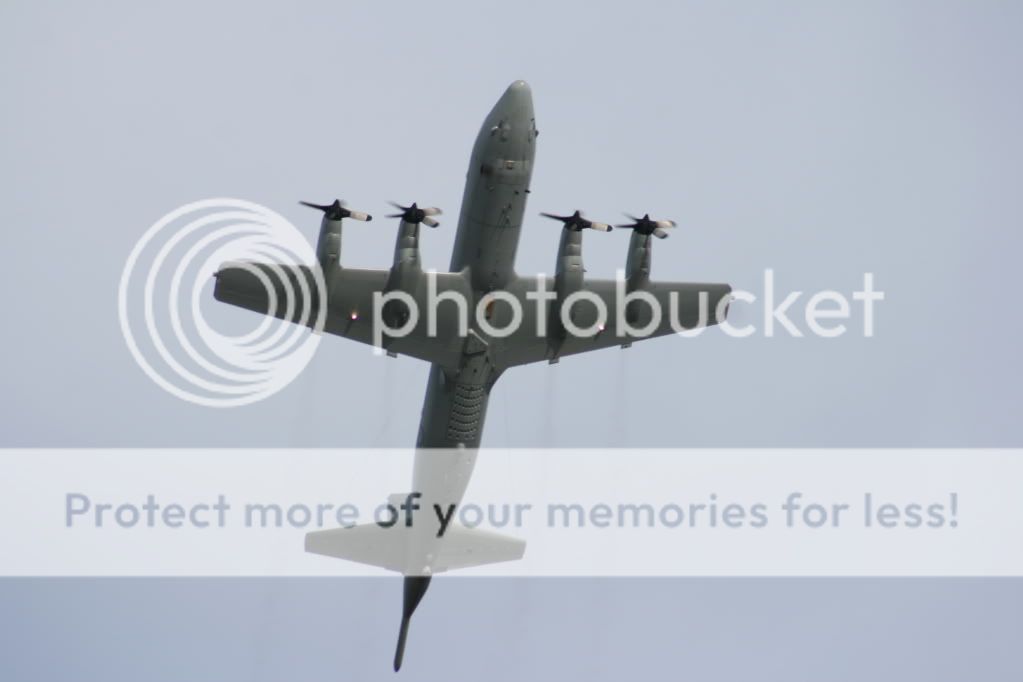 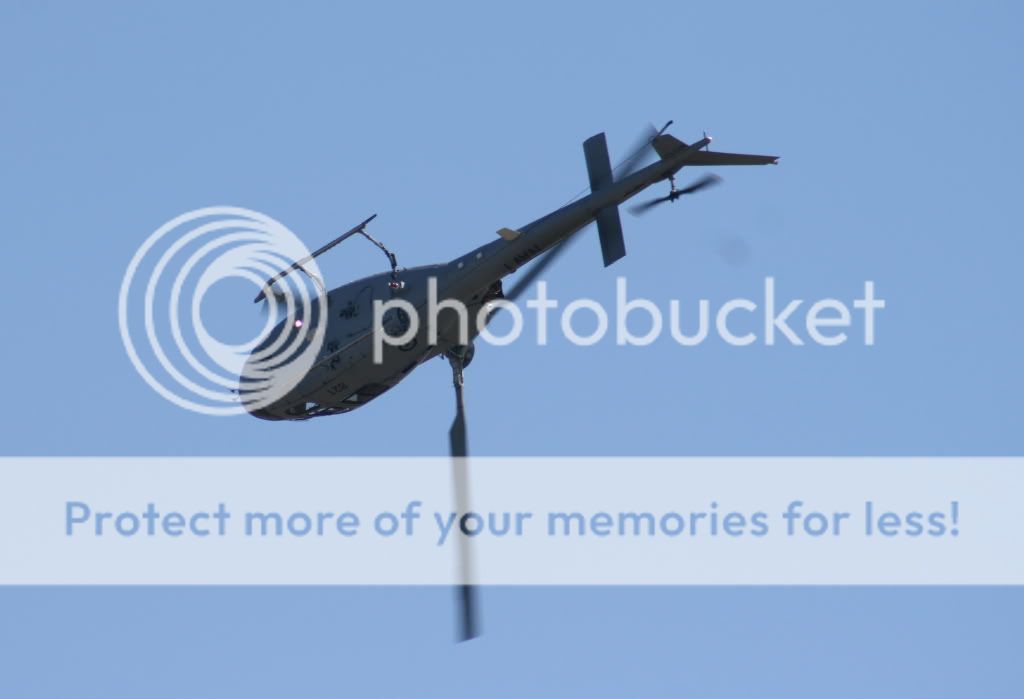 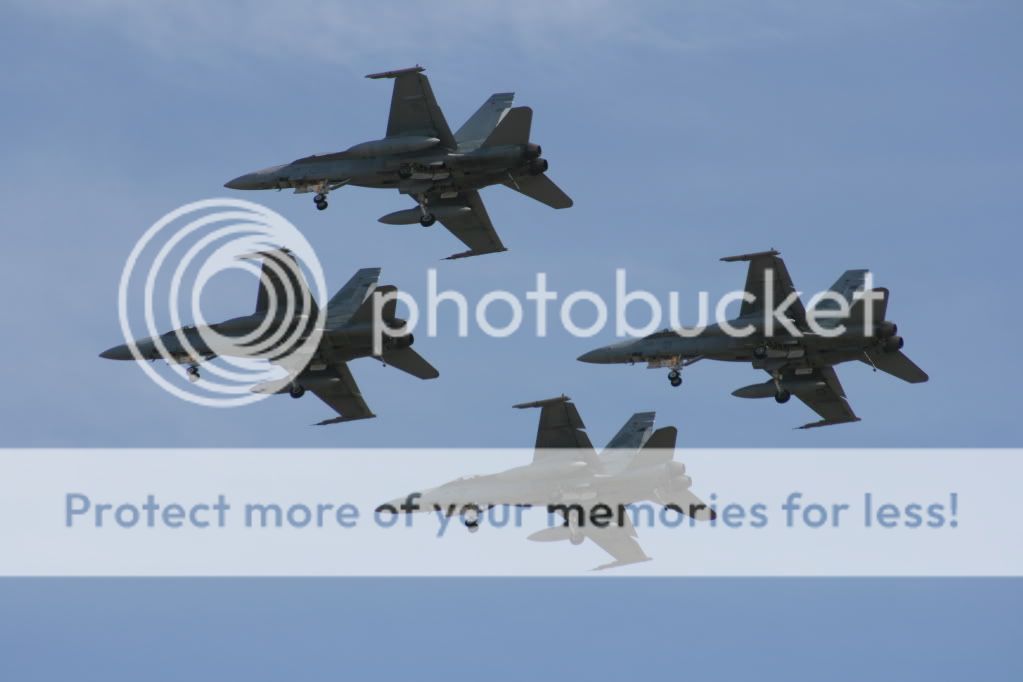  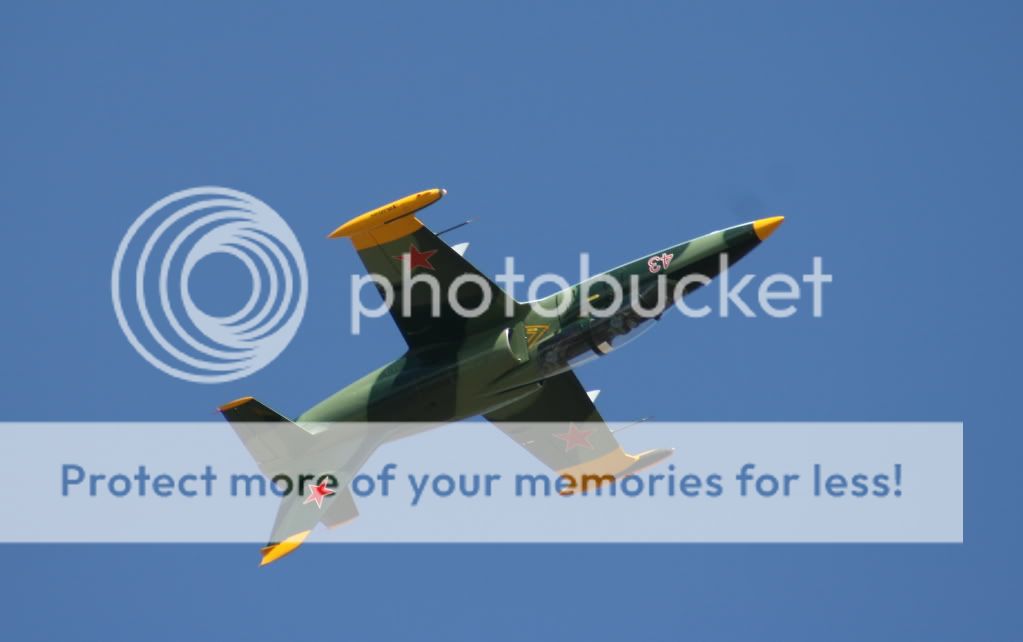 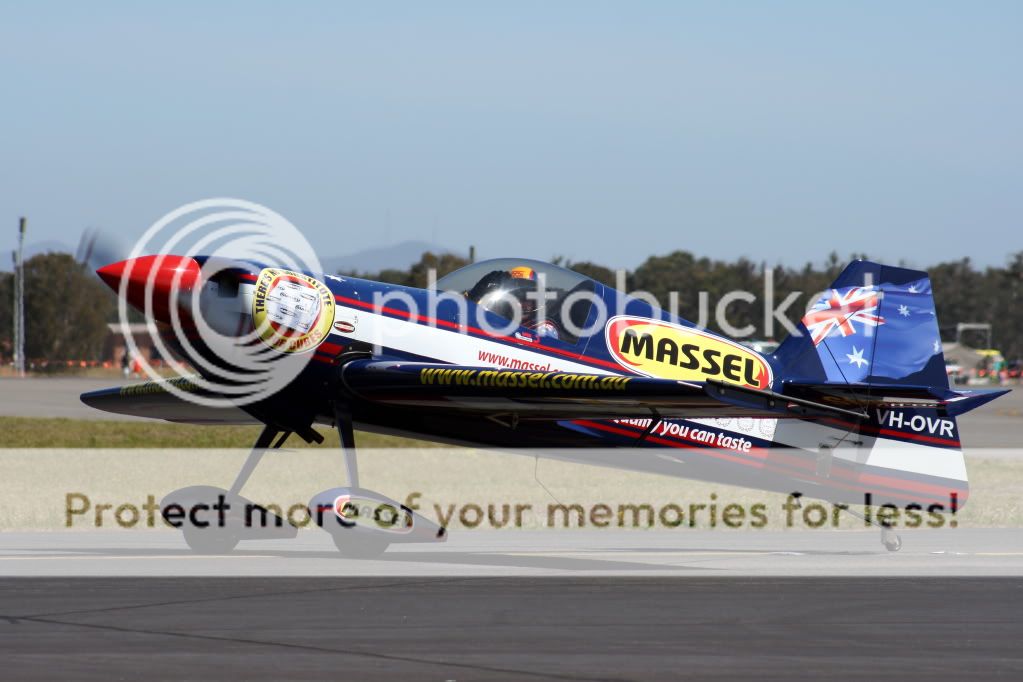 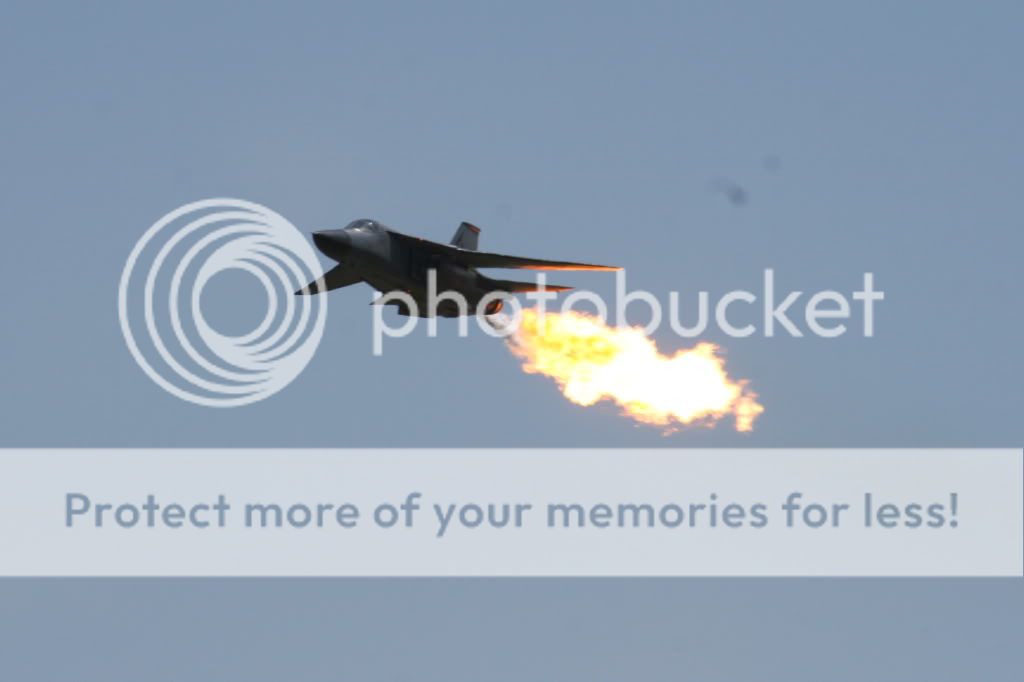 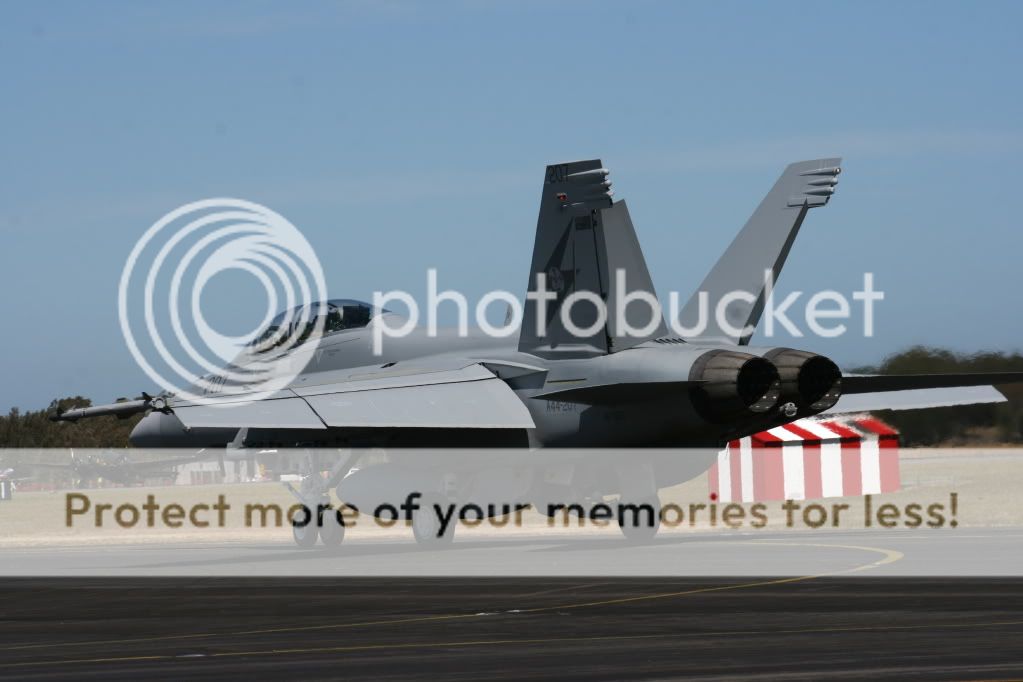 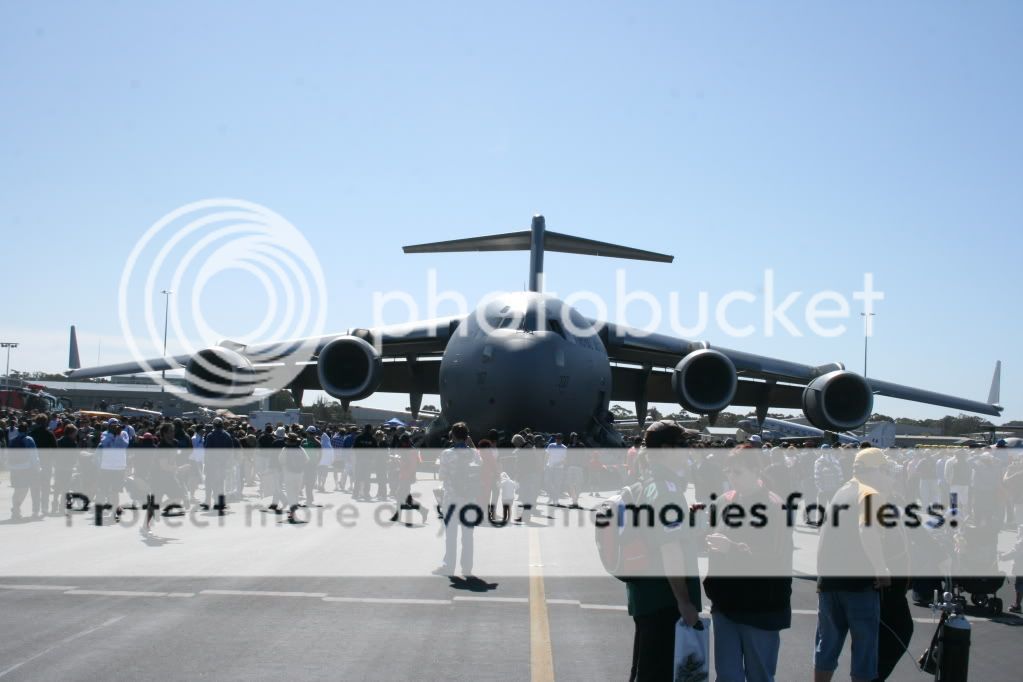
|
||
|
|

|
|
|
#583 | ||
|
FF.Com.Au Hardcore
Join Date: Mar 2010
Posts: 1,481
|
Some of you may have herd of the mission a few years ago to fly a almost perfectly preserved B-29 out of greenland that crashed there in 1947. It was so original the navigators coffee mug was still on the table where it was left in 1947
Here is its story, well worth watching & if you can get hold of the book"hunting warbirds" its about trying to get it arworthy & is a gripping read http://en.wikipedia.org/wiki/Kee_Bird http://www.youtube.com/watch?v=PpR2S_gu5I8  
|
||
|
|

|
|
|
#584 | ||
|
Regular Member
Join Date: May 2010
Posts: 50
|
my favorite aircraft was a dc4 i flew in, new guine in 1988, i was only 12 and the old man was overthere hunting, the fog was a white out and the pilots dove down to where they thought was the run way inbetween thousands of feet of mountains and about 50meters b4 the ground the cloud vanished, he pulled back and landed. very very tough aircraft, i flew in alot of aircraft when i was a kid, i wish i still had photos. when i was about 10 or 9 on the farm, i was outside playing in the garden when 5 or 6 of the craziest planes iv ever seen flew over a place called crowlands in victoria, iv tried to draw the planes but im a stick figure man, put it this way thay looked like bloody starwars things and 2 were zepplin looking, one had a prop at the front and rear but was shaped like a dinner plate, the other 2 i cant really remember that well, they were low as and very slow, i remember grandpa saying later that night a farmer had told him alot of heavy army type trucks had gone into a large goverment water catchment about 10kms away, but i never worked out how they could take off, by the time i was old enough to jump the fence it was all over grown. gran had photos of the planes flying over, i really didnt think it was such a big deal until i was older.
we also had an arvo anson crash into the mountain in the 40s that was a 15min walk from our highest paddock, i used to hike up there and look at the stuff left there, but now there is only a few metal bars left. gran was the first one there and also took alot of photos but them 2 are long gone. |
||
|
|

|
|
|
#585 | ||
|
Falcon RTV - FG G6ET
 Join Date: Mar 2007
Location: In Da Bush, QLD
Posts: 31,688
|
    
__________________
 BAII RTV - with Raptor V S/C. RTV Power FG G6ET 50th Anniversary in Sensation. While the basic Ford Six was code named Barra, the Turbo version clearly deserved its very own moniker – again enter Gordon Barfield.
We asked him if the engine had actually been called “Seagull” and how that came about. “Actually it was just call “Gull”, because I named it that. Because we knew it was going to poo on everything”. |
||
|
|

|
|
|
#586 | ||
|
Mr Impulsive
Join Date: Feb 2005
Location: Perth NOR.
Posts: 1,309
|
Glad this thread is here now I can tell you a funny aviation story.
When I was working at Pearce RAAF base some 15 or 16 years ago I witnessed a stuff up on landing. It was the Singaporean trainer Aermacchi S-211. It landed as per normal which I didn't see but in its travel down the runway after landing the undercarriage retracted and it ground to a halt. I was strapping in a RAAF pilot in his PC-9 and I turned my head to see this plane lower itself and tip to the left and grind to a halt. I tapped my pilot on the shoulder and said "I don't think your going anywhere for a while". He turned around and we both saw the instructor in the back of the s211 remove his helmet and oxygen mask and beat the student in the front with it like a flail. I had a chuckle and so did my pilot. From my understanding the student came in to make a landing with the emergency gear extension. After landing safely he was supposed to lower the normal gear handle and then reset the emergency. He just reset the emergency one and so the gear went up. There was no safety micros to prevent this. After this incident there was a modification to prevent gear up on emergency extension if it is reset.
__________________
Owned Fords 85 Telstar (man), 96 EF GLi (auto), 95 EF XR6 (man), 97 EL Fairmont Ghia (auto), 98 EL XR8 (man), 06 BF wagon (auto), 06 BF XR6 (ZF auto), 08 FG G6E (ZF auto), '10 SY MKII TS Territory (4spd) |
||
|
|

|
|
|
#587 | ||
|
Call me Spud
Join Date: May 2008
Posts: 1,995
|
|
||
|
|

|
|
|
#588 | |||
|
Afterburner + skids =
 Join Date: Dec 2004
Location: Skidsville
Posts: 12,136
|
Quote:
In other news - B-57E, a close cousin to the EE Canberras, with an unusual nose graft for Bomarc missile testing.  Kind of reminds me of the F5E used by NASA for sonic boom reduction testing....weird looking thing! 
__________________
Speed Kills. So buy an AU XR8 and live forever. Oo\===/oO |
|||
|
|

|
|
|
#589 | ||||
|
Regular Member
Join Date: Jan 2005
Location: Melbourne
Posts: 157
|
Quote:
Quote:
Only see freighter ones now at work. Fedex, UPS and Avient. |
||||
|
|

|
|
|
#590 | ||
|
Budding Revhead
Join Date: Aug 2008
Location: Melbourne
Posts: 172
|
Hey guys, does anyone know if the Avalon airshow this year is actually going to have anything different from previous years, more specifically the F22 raptor which they've teased is with for years but never had there???
__________________
 : Mine: Galaxy Blue (now Silhouette black) 99 AU series 1 Fairmont Ghia 5.0 litre V8, tickford sports package, 2 1/2" exhaust 17" RJR rims[/SIZE] : Mine: Galaxy Blue (now Silhouette black) 99 AU series 1 Fairmont Ghia 5.0 litre V8, tickford sports package, 2 1/2" exhaust 17" RJR rims[/SIZE]His: Winter White 99 AU Fairmont,6 cyl, 17" Tickford Rims, nice and stock This mum's in mod mode  www.aufalcon.com/ghiagirl |
||
|
|

|
|
|
#591 | |||
|
Call me Spud
Join Date: May 2008
Posts: 1,995
|
Quote:
The Australian variant (which in my mind should of been next) is due in Feb or March. Then I will have VH-TAA in TAA livery, Australian and Qantas. |
|||
|
|

|
|
|
#592 | |||
|
FF.Com.Au Hardcore
Join Date: Sep 2005
Location: Sydney
Posts: 598
|
Quote:
Hey puffin, where u get those models from? |
|||
|
|

|
|
|
#593 | |||
|
Call me Spud
Join Date: May 2008
Posts: 1,995
|
Quote:
Some are from a shop in Melbourne called Collectors Aircraft Models Australia http://www.camaust.com.au/ Owners name is Terry really nice guy. Others I have sourced from Hong Kong, U.K, USA. Unforunately sometimes even with shipping it is cheaper than aus and in Aus there is obviously particular stuff you can't get. I also buy privately of a collectors forum. If you want to know more like brand, price size etc, PM me. I will actually have spares of the Qantas A300 and a V-Aus 777 in 1:200 scale full diecast, after I have my op. |
|||
|
|

|
|
|
#594 | |||
|
Regular Member
Join Date: Jan 2005
Location: Melbourne
Posts: 157
|
Quote:
No idea if it will really be there or not. |
|||
|
|

|
|
|
#595 | ||
|
FF.Com.Au Hardcore
Join Date: Dec 2004
Location: The Shakey Isles
Posts: 3,428
|
Don't see many black commercial airliners
 Good build video http://www.youtube.com/watch?v=MxjK-...layer_embedded |
||
|
|

|
|
|
#596 | ||
|
Afterburner + skids =
 Join Date: Dec 2004
Location: Skidsville
Posts: 12,136
|
Wow, that looks great. Great vid too
__________________
Speed Kills. So buy an AU XR8 and live forever. Oo\===/oO |
||
|
|

|
|
|
#597 | ||
|
Call me Spud
Join Date: May 2008
Posts: 1,995
|
So guys here are my last 2 purchases for a very long time. Have to save so I can try and cover bills whilst I am off work for surgery. I am hoping to convince surgeon to hold off till the new financial year. Anyway on to the models. First is a 1:200 V-Australia 777-300, Second is an Ansett 737-200. If anyone is interested I do have a second V-Aus I can sell. Let me know via PM.
  A shot of the size difference. Both are in 1:200 scale (excuse the dust on the table lol)  Finally a shot of my crowded desk with a full cabinet beside. I think I have far too many models some days, but I love looking at them. 
|
||
|
|

|
|
|
#598 | ||
|
The Thread Killa
Join Date: May 2006
Location: Melbourne
Posts: 1,064
|
Very nice display. I do love those Ikea DETOLF glass cabinets!
__________________
"It is the mark of an educated mind to be able to entertain a thought without accepting it." - Aristotle |
||
|
|

|
|
|
#599 | |||
|
FF.Com.Au Hardcore
Join Date: Dec 2004
Posts: 12,077
|
Quote:

|
|||
|
|

|
|
|
#600 | ||
|
Call me Spud
Join Date: May 2008
Posts: 1,995
|
Does anybody watch ice pilots? I watched season 1 and am currently downloading season 2. I liked the old school aircraft they use. DC-3, C-46, DC-4 and an Electra. The boss is a grumpy old bastard lol.
|
||
|
|

|